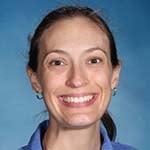Talking about Puberty with Children with Autism
Be Proactive
Parents of children with special needs are their children’s best advocates. This applies not only to education, health care, speech, occupational, or physical therapy needs, just to name a few, but to puberty as well. As parents of children with autism know, kids with ASD can be very resistant to change.

Whether it is a change in routine, a change in staffing at school, or a change in a weekly or monthly schedule, people with autism benefit greatly when they have been properly prepared for changes. It would only make sense, then, that children will respond best to the physical, mental, and emotional changes that occur with puberty when they have been properly prepared and educated about these changes. After all, puberty is quite a change!
The only way parents will know that their son or daughter has received accurate, appropriate, and properly-delivered information about puberty, reproduction, and sex education is if they provide that instruction themselves. Parents can deliver correct information before their child hears misinformation from their peers or misinterprets information given in school or other educational settings. Because people with autism often struggle with gathering information from the environment and learning from it without direct instruction, so expecting that a child with autism will understand the information given in school, heard from peers, or learned from secondary sources such as the TV or Internet is unrealistic.
In order to prepare their child for puberty, parents may first need to prepare themselves. This can be an uncomfortable topic for parents of typically-developing children, let alone for parents of children with special needs. To talk about this well, parents may need to revisit some of the basics of puberty themselves. A list of books and websites can be found at the end of this article that may help to serve as a place to get more information for parents and ideas about books that may be appropriate for parents to look at together with their child with autism.
Use Language that is Simple and Direct
Depending on an autistic child’s language skills and/or how well they understand abstract concepts, they may need more or less of an explanation about when or why puberty is happening. Some children may not need to learn about the biological aspects of puberty because it will be confusing and too abstract for them to fully understand. Rather, they need to be taught how to manage the changes that come with puberty, and their reactions to these changes, appropriately. For example, a young girl with autism may not necessarily need to understand that the reason she is menstruating is her body is physically preparing for possible pregnancy and reproduction. However, she must understand how to handle her period, including using related supplies and practicing good hygiene. Other children with ASD may have the ability to understand that puberty is a stage of development that prepares humans to have babies. Regardless of a child’s cognitive abilities or verbal skills, language should be kept simple and be as direct as possible in order to avoid confusion.
When talking to a child with ASD, euphemisms should be avoided, as people with autism tend to understand things on a very concrete level. Telling a young man that his voice may break while he goes through puberty could cause him some undue anxiety. Instead, he should know that his voice will get deeper as he becomes an adult man, and that sometimes his voice may sound squeaky or high-pitched. This is normal, and he may hear it referred to as his voice "cracking" or "breaking," but all that is actually happening is that his voice is changing.
Be Available
As many teenagers, autistic or not, will not initiate talking about puberty or sex with their parents, it is up to the parents to make a time for this conversation. Parents should do their best to make themselves available for open discussion and answering any questions their child with autism may have. Talking about and processing the topic of puberty with a child with ASD will likely not occur in just one sitting, but rather be an ongoing process that occurs over several months or possibly years. Parents need to be prepared to have discussions more than once and to reiterate or reteach certain aspects of puberty as their child hears more from their teachers and their peers as they get older.
Parents can assure their children that, having already gone through puberty themselves, nothing will surprise them and they are available to talk about any questions the child may have. But it is important to live up to this statement! If in fact a child does ask a question or tell a parent something that is alarming or unexpected, the parent cannot act surprised! This can dissolve a child’s trust in their parent and make them feel ashamed or embarrassed. It is critical that children with autism feel comfortable talking to their parents about puberty-related topics, especially since some of the changes that happen with puberty can make children feel ashamed of themselves or cause them to think they are letting their parents down. For example, a young boy who does not fully understand nocturnal emissions (wet dreams) may think he has wet the bed and feel embarrassed to tell his parents because, in his mind, only little kids wet the bed. Teaching the boy about wet dreams before they started to happen, and providing him with language to talk to his parents about it could have resulted in a less embarrassing and anxiety-provoking scenario.
If a child asks a parent a question that the parent is not sure how best to answer in the moment, it is better for the parent to be honest with the child and respond with something like, "That’s a great question, let me think about that and get back to you," or "I’m not sure what the answer is. Let’s look it up together," than to come up with a quick and possibly confusing answer. By being honest with the child, the parent is able to buy themselves more time if necessary in order to come up with an accurate, yet simple answer that will be appropriate for their child. If parents try to answer too hastily, the language they use may not be clear and the child with ASD may end up confused or with conflicting information.
For many people with autism, misinformation or misunderstandings can cause high anxiety, and they are not always aware of how to communicate the root of their anxiety to others when this occurs. Parents (and their children) are better off being proactive and thoughtful about their approach to talking about puberty with their child with autism than to wait until the child has begun to learn about or even go through puberty.
Labeling Body Parts
Although some grown adults find it uncomfortable to use medical terms for the body parts used for reproduction, it is important that children with autism are taught these terms. For example, a man has penis and testicles, and a woman has breasts and a vagina. This may be embarrassing at first as some parents are uneasy using actual names of these body parts themselves, but some kids with autism may hold onto a name and use it for the rest of their lives. It will be much easier for the child with ASD to have appropriate terminology with which to talk about their own bodies with their doctors, parents, or other caretakers, particularly as they grow older.

While it might be acceptable for a four-year-old to talk about his "pee pee" in reference to his penis, it is not quite as acceptable to use that term when the child, who is now 13, is getting a physical and mentions his pee pee to his doctor, or is overheard by his peers talking to an aide about his pee pee after high school gym class. Using medical terminology for these body parts helps give a child with ASD the language to talk about their own bodies when they need to, as well as decreases the chance that they are made fun of by their peers for using "childish" or unusual terms to refer to their private parts. Along with teaching the medical terms for these body parts, it is also beneficial to teach a child the slang words they may hear from their peers in school. Otherwise, they may not understand that "boobs" means the same thing as "breasts" and likely won’t think to ask for clarification.
When talking about body parts it is also important to talk about safe touching of a person’s body. Children with autism should be explicitly made aware that there are some body parts that should never be seen or touched by anyone unless it is their job to do so and it keeps the child clean and healthy. These body parts can generally be described as what is covered up by a swimsuit, or the breasts, buttocks, and vagina of a woman and the buttocks, penis, and testicles of a man. As mentioned earlier, a "rule" that can be beneficial here is the "clean and healthy" rule. That is to say, certain, trusted people may look at or touch someone else’s body, including their private parts, because they are helping that person to be clean or healthy. For example, parents might help a child take a bath to make sure they are clean and a doctor may examine their bodies when they are not feeling well to help them get healthy. Making lists of who can and cannot touch a child according to the clean and healthy rule may help make this more concrete for a child with autism.
Changes are Normal
Some children are aware of the differences between the bodies of children and adults. They can identify that grown women have breasts and larger hips than young girls and that grown men have more body hair and deeper voices than little boys. This is a great place to start when discussing the changes that are the result of puberty. Again, it is important to be clear in the use of language when talking about these changes. Children with ASD often have difficulties generalizing information from one situation to another. In the case of puberty, they may begin to understand that bodies change as children become adults, but not recognize that their body will change as they become an adult. Using direct, clear language such as, "You will grow hair between your legs" can help the child to better understand what to expect and not be as anxious when these changes start happening to them. Social stories can be a helpful tool in explaining what children can expect as they go through different phases of puberty. The PDF Puberty and Autism Spectrum Disorders from Amaze (see Further Reading below for address) has some useful suggestions for topics of social stories that may be helpful for both boys and girls.
Visual Supports
Although talking to children with autism about puberty is an important part of helping them to understand the changes happening to their bodies as they become adults, many people with autism are very visual learners and too much language can be overwhelming. Social stories, lists, checklists, pictures, illustrations, and other visuals can be tremendously helpful tools for children with autism to better learn about any topic, but especially a topic as initially abstract as puberty. Examples of these types of visuals are discussed at length in the various books and websites listed at the end of this article and can be particularly helpful for teaching more sensitive topics such as where it is okay to masturbate (list of private vs. public places), steps for changing a pad (checklist with picture supports), or how to handle new dimensions of social relationships (social story about rejection at a school dance). Although these topics are generally the same for the people who would use them, care should be taken to individualize any visual supports used so that they meet child-specific needs.
Ongoing Process
As mentioned earlier, teaching a child with autism about puberty should start early and is an ongoing process that will span the course of a child’s transition to adulthood. But when parents provide accurate information using direct, easy to understand language, and allow multiple opportunities for re-teaching and questions from their child, the process can be made much easier for parents and child alike. Puberty does not have to be an uncomfortable topic and the more it is discussed the less awkward it will become, until it is something that is mentioned just like looking both ways before crossing the street or washing hands after using the bathroom. The transition from child to adult is rarely easy for any child, regardless of disability. But for a child with autism this process can be made easier with parents who teach, support, reassure, and advocate for their child every step of the way.
Further Reading
Below is a list of books and websites that may be helpful for parents to look at both with and without their child. Some books, including It’s Perfectly Normal and "What’s Happening to Me?" include anatomically correct illustrations that can be useful tools for children who are more visual learners.
Books
Sex, Sexuality, and the Autism Spectrum
By Wendy Lawson
Talking Together About Growing Up: A Workbook for Parents of Children with Learning Disabilities
By Lorna Scott and Lesley Kerr-Edwards
Autism-Asperger's & Sexuality: Puberty and Beyond
By Jerry and Mary Newport
Taking Care of Myself: A Hygiene, Puberty and Personal Curriculum for Young People with Autism
By Mary Wrobel
It’s Perfectly Normal: Changing Bodies, Growing Up, Sex, and Sexual Health (The Family Library)
By Robie H. Harris and Michael Emberley
"What’s Happening to Me?" A Guide to Puberty
By Peter Mayle
Websites & PDFs
Amaze Puberty and Autism Spectrum Disorders
Kennedy Krieger Institute Sexuality Education for Children and Adolescents with Autism Spectrum Disorders
Sex Information and Education Council of Canada Autism Spectrum Disorder: Information for Sexual Health Educators
Pathfinders for Autism Teach Your Child about Sexuality, Relationships, and Other Teen Issues
The National Autistic Society Sex Education and Children and Young People with an ASD
![]()
![]()

Jenna Wharff, Ed.M.
Jenna Wharff is a special education teacher at HOPEhouse at Cotting School, a transitional boarding school for students age 17-22 with special needs, in Lexington, MA. She specializes in helping her students prepare for life after high school by teaching independent living, vocational, and social skills as well as practical academics and providing opportunities for her students to apply what they have learned in the classroom to their everyday lives. She aims to help students and their families make the transition from special education to adult services as smooth as possible, while providing her students with the skills and knowledge necessary to lead productive and meaningful lives after leaving HOPEhouse. Jenna received her Master's degree in Mind, Brain, and Education from Harvard Graduate School of Education in 2007.






